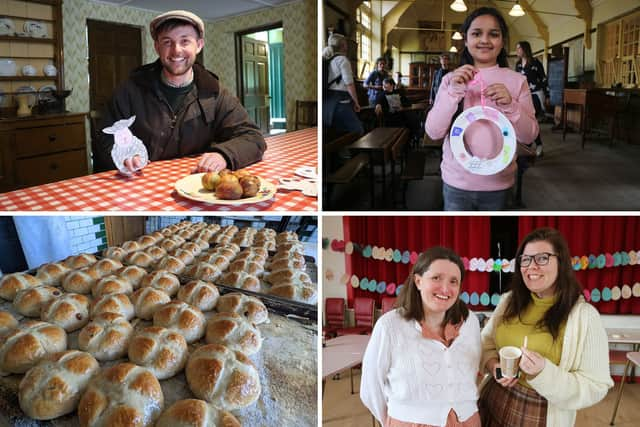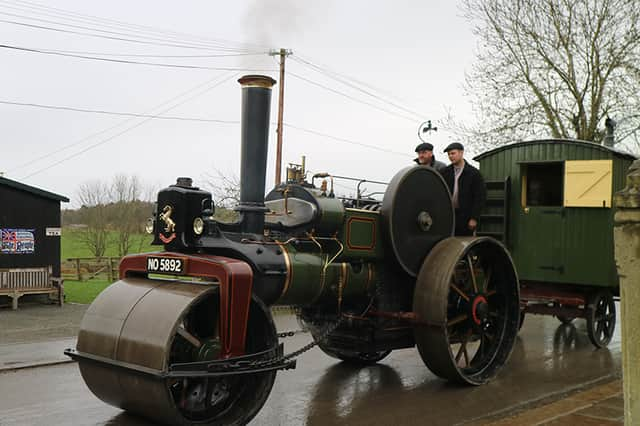Beamish Museum revives amazing Easter celebrations from the past
and live on Freeview channel 276
Children and parents alike can journey back in time to experience what Easter was like in Victorian Britain as well as the Edwardian and war eras.
Beamish Museum - The Living Museum of the North - is hosting a range of Easter themed activities celebrating Easter in the 1800s, early 1900s, 1940s and 1950s.
Advertisement
Hide AdAdvertisement
Hide AdChildren visiting the award winning attraction can take part in an Easter egg hunt to find the 12 eggs hidden across the museum. Successful participants will receive a certificate and gold stamp.
Visitors of all ages can also enjoy an array of tasty treats with Easter themed cooking demonstrations of popular historical Easter dishes from a roast lamb dinner and fish and chips to simnel cake and hot cross buns.


If you want to enjoy the Good Friday (or any other day) tradition of fish and chips then what better way than to pay a visit to Davy’s Fish and Chip Shop in The 1900s Pit Village or Middleton’s Quality Fish and Chips in the 1950s Town.
Rosie Nichols, Keeper of Social History at Beamish Museum, said: “In the past, there would be as much excitement around celebrating Easter as Christmas, particularly as it was one of the few times of year that workers would get time off. First on Good Friday and by the 1870s Easter Monday too.
Advertisement
Hide AdAdvertisement
Hide Ad“Good Friday was always a solemn day on which no work was done and many people would eat fish and hot cross buns. People would look forward to traditional food and pastimes for the rest of the long weekend along with a trip to church on Easter day itself.
"Edible treats would include simnel cake, roasted lamb and, by the middle of the 20th century, novelty chocolate eggs. Many children would receive new clothes to be worn for the first time at Easter and much fun would be had playing games and relaxing with family and friends.
“This Easter at Beamish, visitors can take a look at how Easter was marked in the past through the foods eaten and take part in traditional seasonal activities from Georgian egg jarping to egg rolling in The 1900s Town park and egg and spoon racing in the 1950s Town.
"You can also get stuck in with Easter crafts such as finger puppet making, wreath making and egg catapulting.”
Advertisement
Hide AdAdvertisement
Hide AdThere will also be specific activities taking place at the museum at certain dates which are shown below.
From March 30 to April 1 children and parents can enjoy making Easter wreaths at the Victorian school.
From March 29 to April 1, families can make a finger puppet at The 1940s farm and make Easter animal pom poms at Spain’s Field Farm.
Visitors can try egg jarping at Pockerley Old Hall, from March 30 to April 1. Egg jarping was a traditional game, popular in the North East. Players are each given a hard-boiled egg and take it in turns to hit the other player’s egg with their own.


Advertisement
Hide AdAdvertisement
Hide AdEgg rolling will take place in The 1900s Town Park from March 30 to April 1, while you can give egg catapulting a go at the 1950s Welfare Hall on March 29 and 30. Visitors can also take part in a traditional egg and spoon race in the 1950s Town on March 31 and April 1.
The museum is also gearing up for the Beamish Steam Gala – Wheels of Industry event on April 6 and 7 when visitors will get to see a range of visiting steam engines, rollers and internal combustion vehicles.
Comment Guidelines
National World encourages reader discussion on our stories. User feedback, insights and back-and-forth exchanges add a rich layer of context to reporting. Please review our Community Guidelines before commenting.